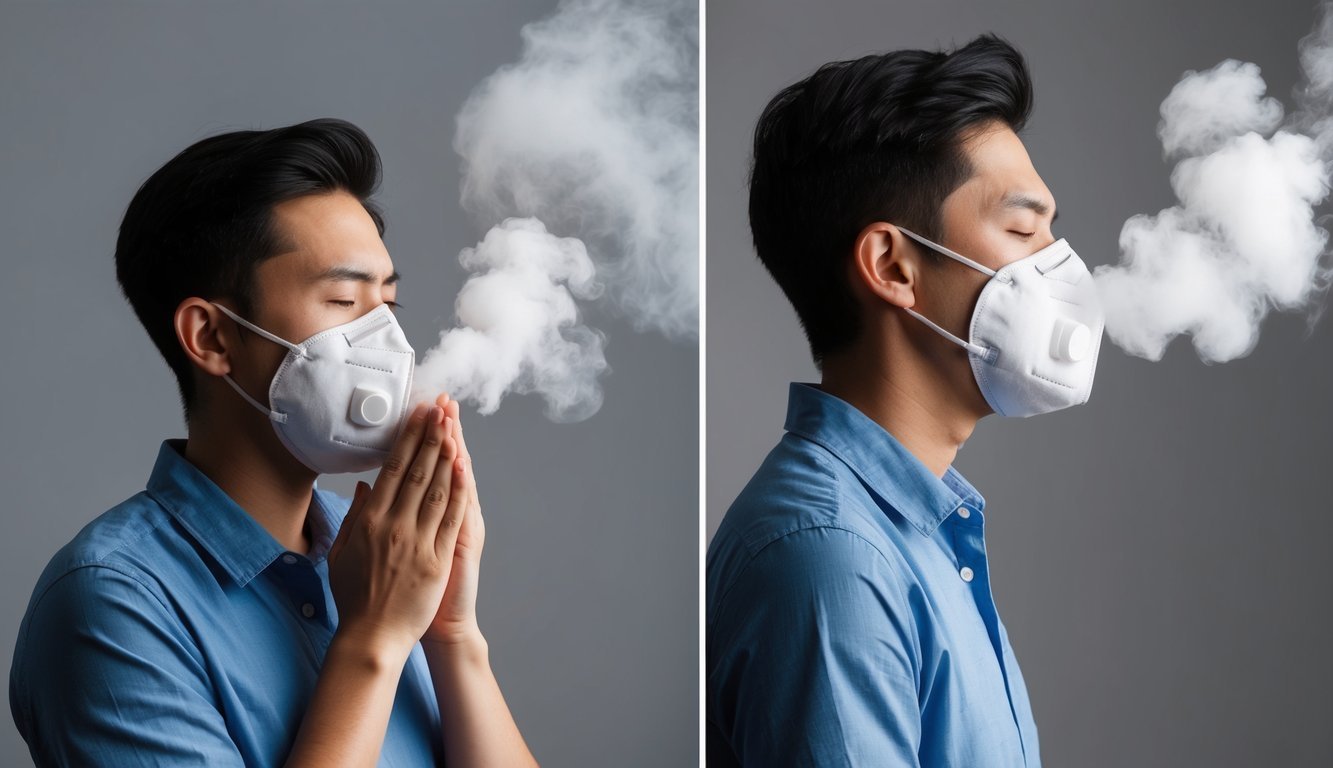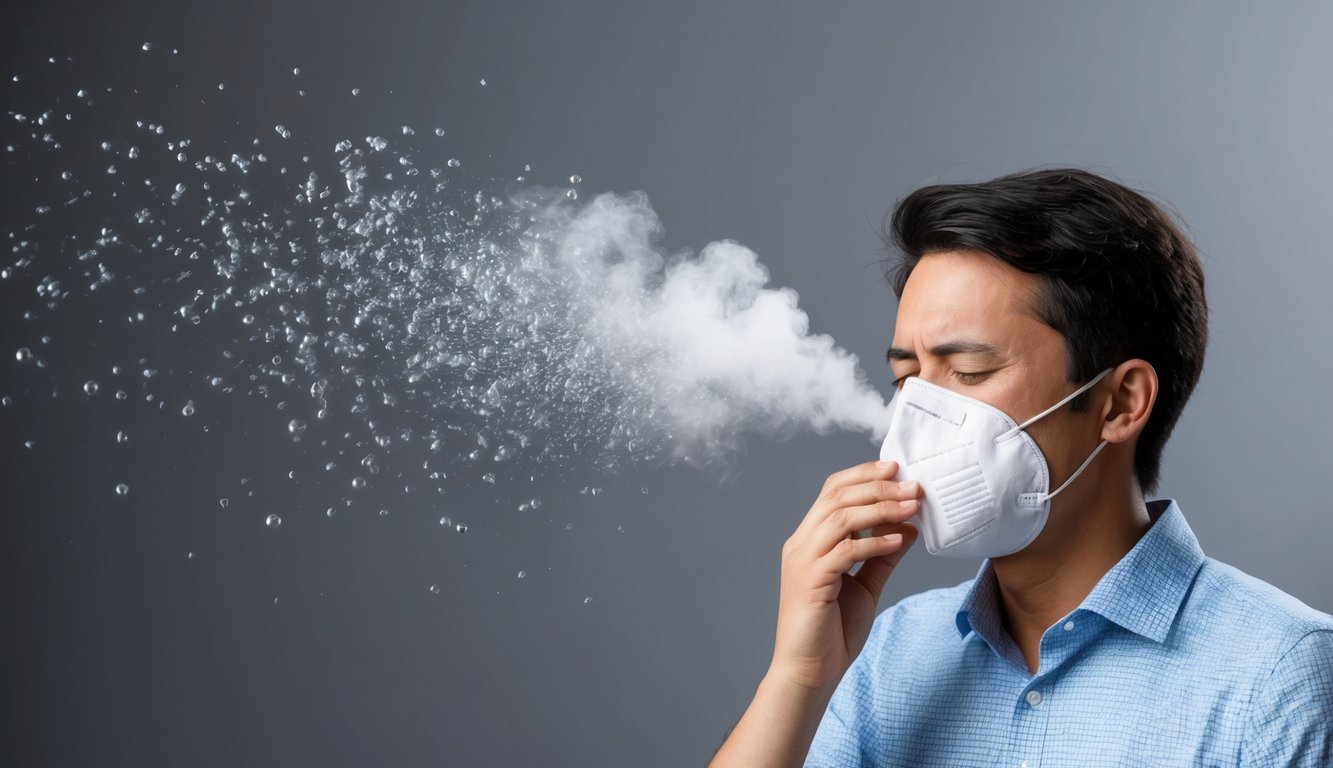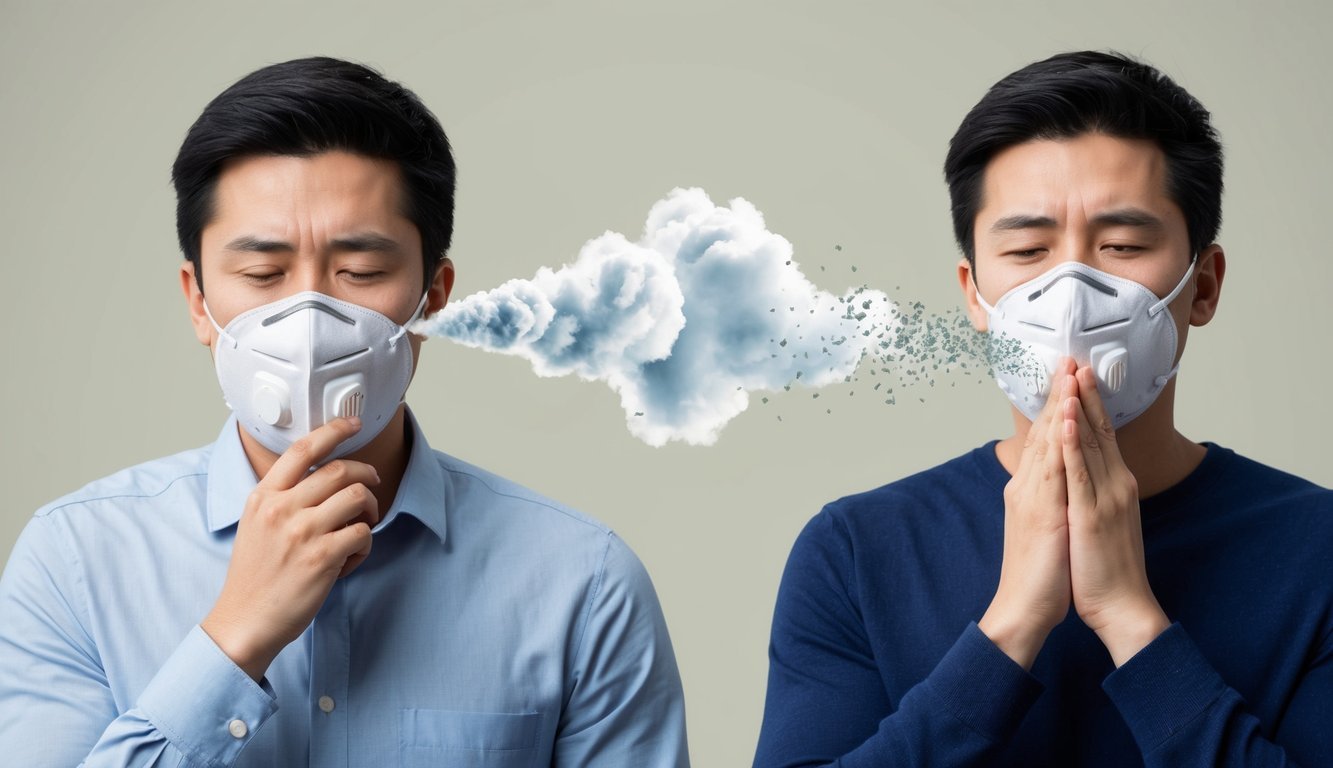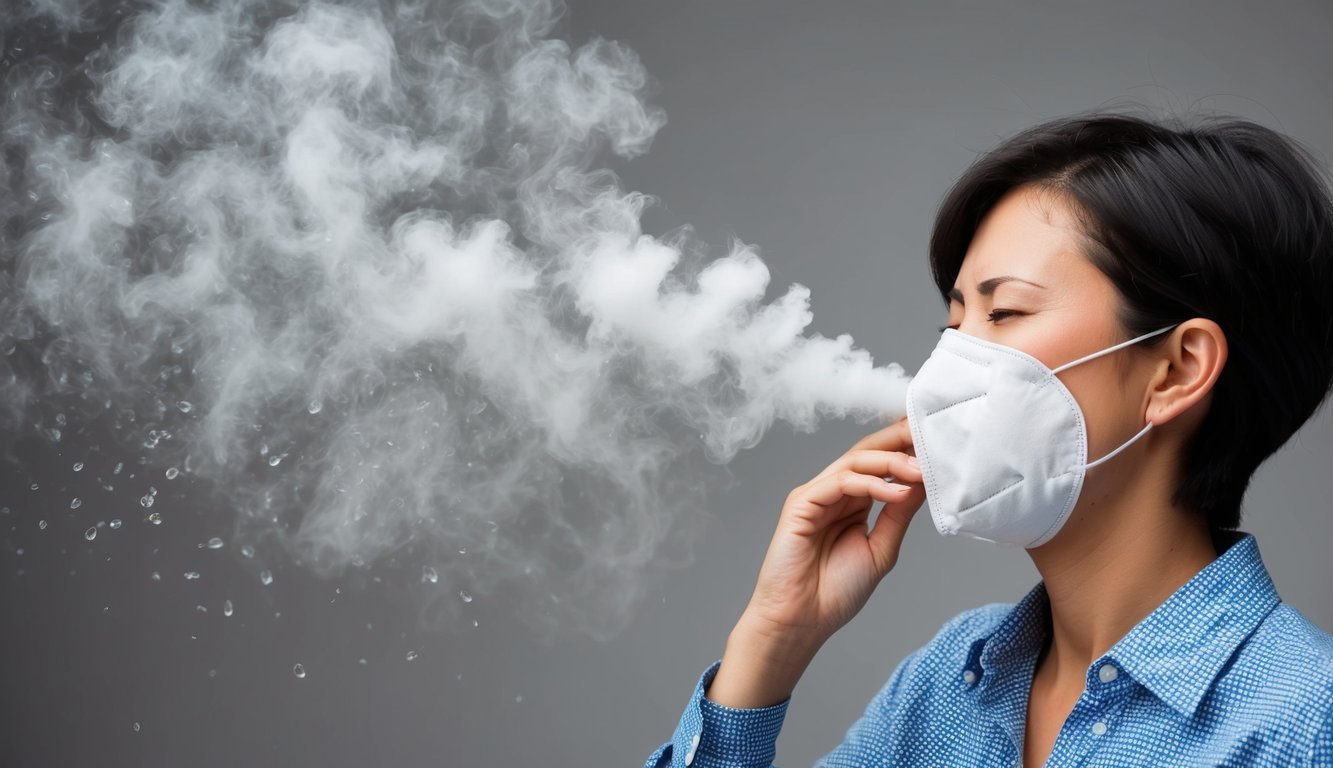PsychNewsDaily Publishers
100 Summit Drive
Burlington, MA, 01803
Telephone: (320) 349-2484
PsychNewsDaily Publishers
100 Summit Drive
Burlington, MA, 01803
Telephone: (320) 349-2484
Cough clouds release tiny droplets that can carry viruses, increasing infection risk. Wearing masks significantly reduces cough cloud size, enhancing public health safety in crowded spaces.

When someone coughs, tiny droplets can travel through the air, creating what is known as a “cough cloud.” This cloud can carry viruses and bacteria, increasing the risk of infection for those nearby.
Wearing a mask can reduce the size of this cough cloud by seven to twenty-three times, depending on the type of mask. This significant reduction highlights the importance of masks in controlling the spread of infections, especially in crowded places.
Research shows that the volume of cough clouds without a mask is dramatically larger compared to those wearing masks. For example, it has been found that the cough cloud is seven times larger without a surgical mask and a staggering twenty-three times larger without an N95 mask. This information emphasizes how effective masks can be in keeping people safe from airborne diseases.
By understanding the impact of cough clouds and the benefits of masks, individuals can make informed choices about their health and safety. Recognizing the power of simple actions, like wearing a mask, can greatly contribute to infection control in communities.

Cough clouds are important in understanding how respiratory viruses spread. This section looks at how cough clouds form and the role masks play in controlling their size.
When a person coughs, they release tiny droplets into the air. These droplets vary in size and can travel different distances. The group of droplets is often referred to as a “cough cloud.”
Without a mask, studies show that cough clouds can be seven times larger than when wearing a surgical mask. In fact, without any mask, these clouds can reach sizes that allow them to travel far, increasing the risk of virus spread.
Droplet transmission occurs when larger droplets fall to the ground, but cough clouds can also contain smaller aerosols that linger in the air. These can stay suspended longer, which leads to aerosol transmission. Thus, understanding the dynamics of these droplets helps in managing infection risks.
Different masks have varying effectiveness in limiting cough clouds.
In a quick comparison:
| Mask Type | Reduction of Cough Cloud Size |
|---|---|
| No Mask | 100% |
| Surgical Mask | 7 times smaller |
| N95 Mask | 23 times smaller |
Wearing masks helps protect others by limiting the number of infectious droplets released into the air. This is crucial in managing respiratory illnesses, especially during outbreaks.

Understanding the size of “cough clouds” plays an important role in public health and safety. It helps identify effective measures to minimize the spread of respiratory diseases, such as COVID-19, and protect vulnerable populations.
Mask mandates in public areas are crucial. Research shows that cough clouds without masks can be up to 23 times larger than when masks are worn. This means germs spread further without proper face coverings.
Cities and states often implement mask rules in crowded places like stores and public transportation. These regulations can help reduce the number of infections. Over time, they can also lower hospital visits and related health problems.
In high-risk settings, wearing masks is especially important. Examples include healthcare facilities, crowded indoor spaces, and events with large crowds. In these environments, the chances of encountering the coronavirus are higher.
Wearing masks significantly lowers the emission of respiratory droplets. Health organizations recommend strong mask use in these places to protect both workers and patrons. This helps in managing the risks associated with viruses and reducing mortality rates.
Health organizations continuously update guidance on mask-wearing. The World Health Organization (WHO) reviews data regularly. As new studies emerge, recommendations about mask use may change.
During the pandemic, advice shifted as researchers discovered more about the virus and its transmission. Organizations encourage following current guidelines to stay safe. This adaptability helps communities respond effectively to ongoing challenges in public health.

Community and individual actions play a vital role in reducing the spread of germs, especially respiratory droplets from coughing. By taking proper measures, each person contributes to a safer environment for everyone.
Individuals and households are the first line of defense in health safety. Wearing face coverings, especially in crowded places, can significantly reduce the size of cough clouds. Each person should commit to wearing masks in public areas such as shops, restaurants, and bars.
Key Points for Households:
By ensuring everyone in a household follows these practices, they help create a culture of health awareness within the community.
Businesses have a responsibility to provide a safe space for customers and employees. This includes enforcing mask-wearing and ensuring that everyone follows health guidelines.
Business Actions:
Companies can face fines if they do not adhere to safety guidelines. Regular training for staff can also help maintain a safe environment and reassure customers.
Government regulations play a crucial role in managing public health. Local authorities can introduce tougher enforcement measures to ensure compliance with health rules.
Key Aspects of Enforcement:
Through strict enforcement of coronavirus rules, the government ensures that individuals and businesses uphold their responsibilities.

Masks play an important role in reducing the size of cough clouds and can greatly lower the risk of spreading respiratory infections. Understanding how masks work and their benefits can help everyone stay safer in public settings.
Wearing a mask helps capture respiratory droplets that are released when someone coughs, sneezes, or talks. This reduces the number of droplets that can travel into the air and reach others nearby. Masks can significantly lower the likelihood of virus transmission.
Masks block respiratory droplets from escaping a person’s mouth and nose. When people wear masks, they not only protect themselves but also protect others from potential infections. This is especially important in crowded places where maintaining distance can be difficult.
Coughing can release a large number of tiny droplets that may contain viruses into the air. Wearing a mask helps limit the spread of these droplets. It decreases the chance of others inhaling these particles, which can lead to infection.
Research shows that droplets can travel several feet when someone coughs or sneezes. Without a mask, these droplets can reach others quickly. Masks can greatly reduce the distance these droplets travel, making it safer for people in close proximity.
Different masks offer varying levels of protection. N95 masks can reduce cough cloud size by up to 23 times, while surgical masks are also effective but to a lesser extent. Cloth masks can provide some protection, but their effectiveness can vary based on the material used.
In public or crowded places, close contact with others increases the risk of infection. Wearing masks helps protect everyone, especially those who may be more vulnerable to respiratory illnesses. This simple action can make a significant difference in public health.